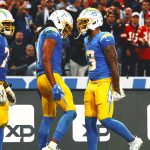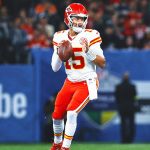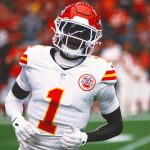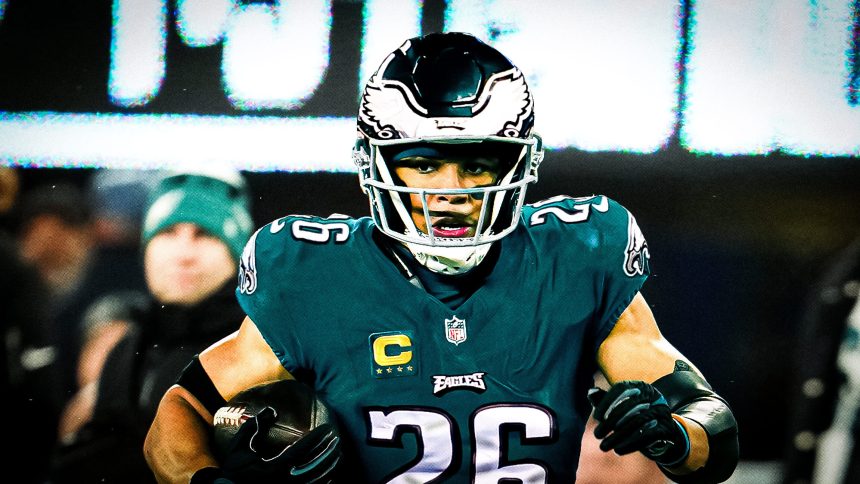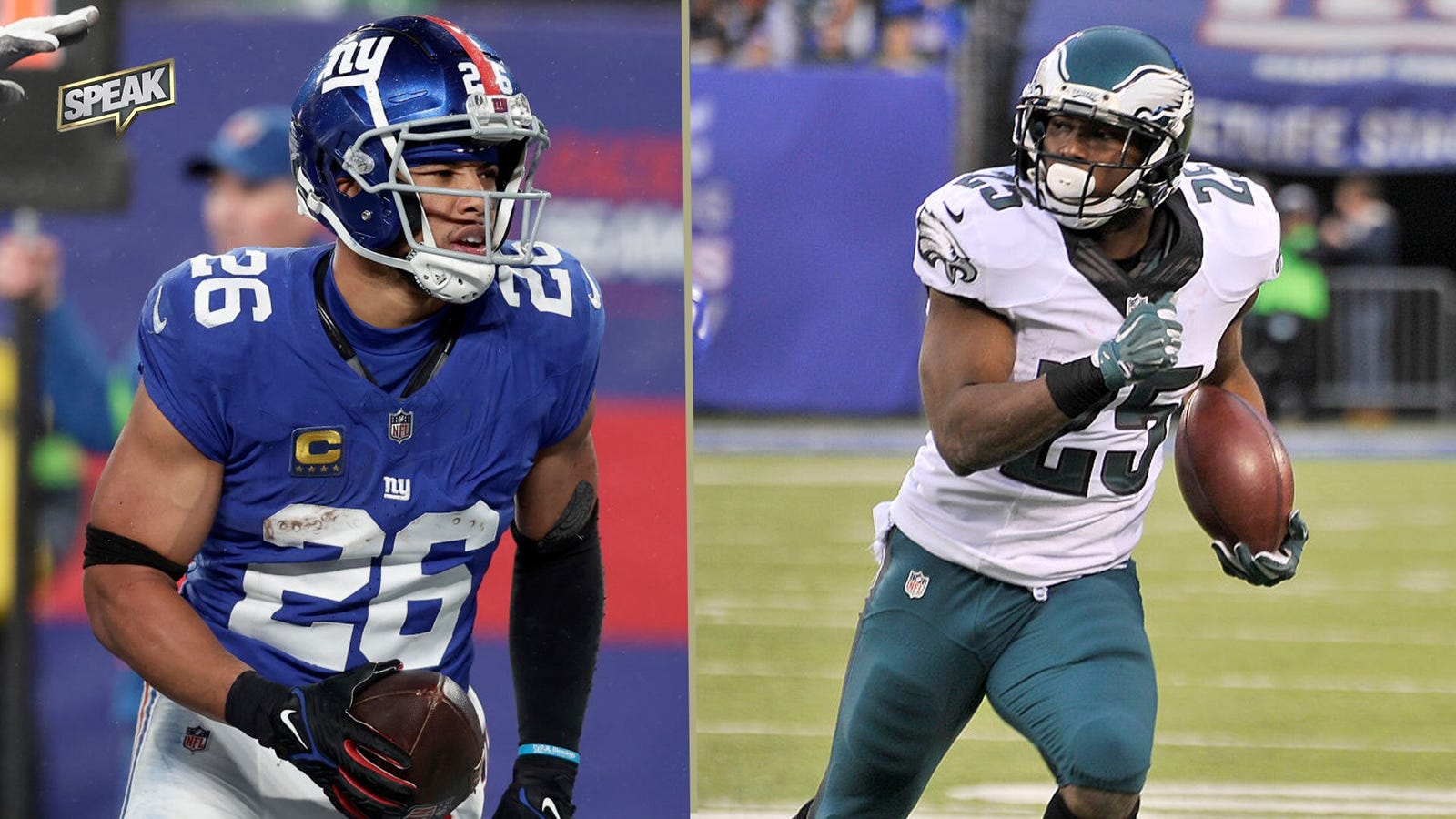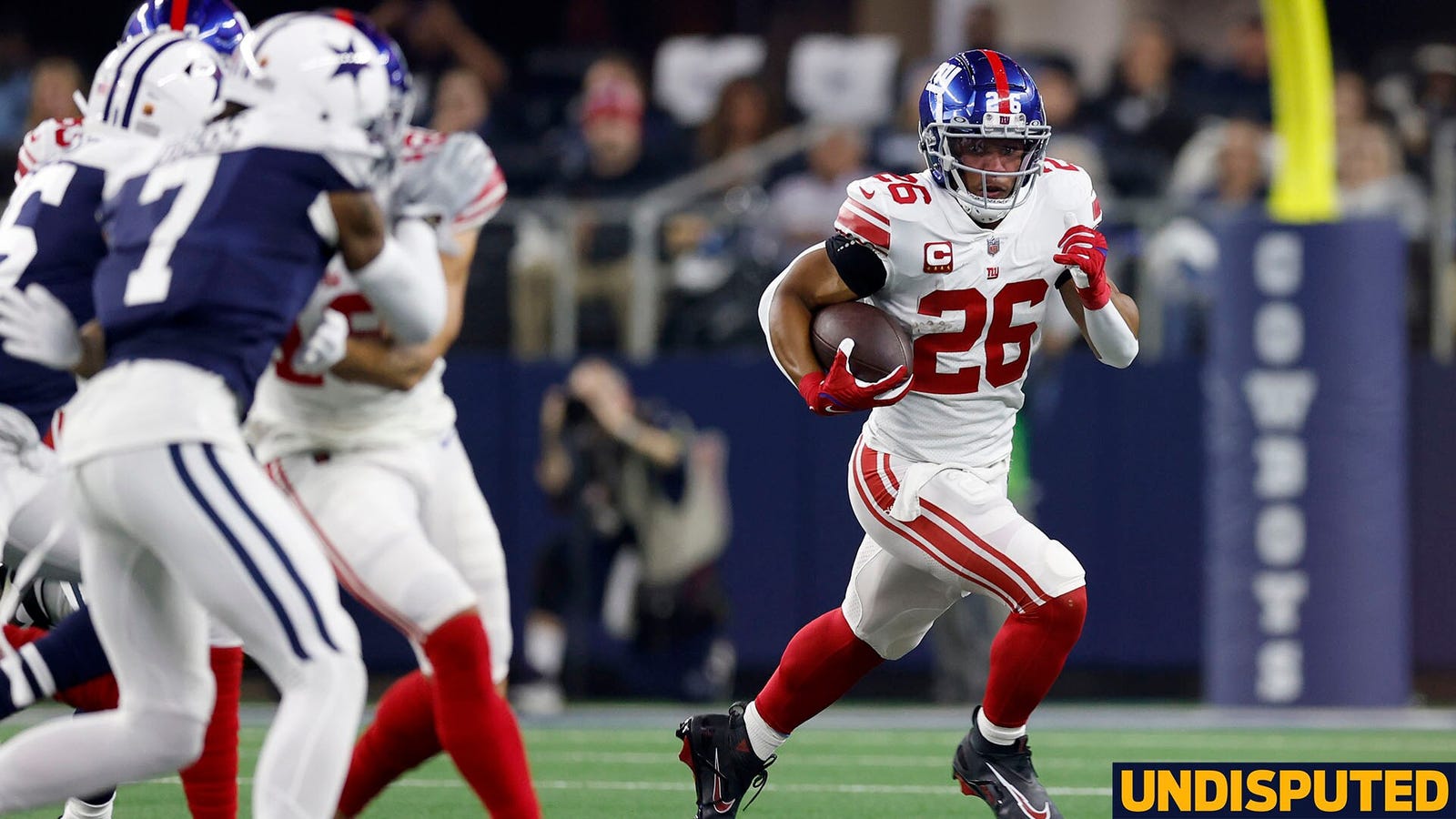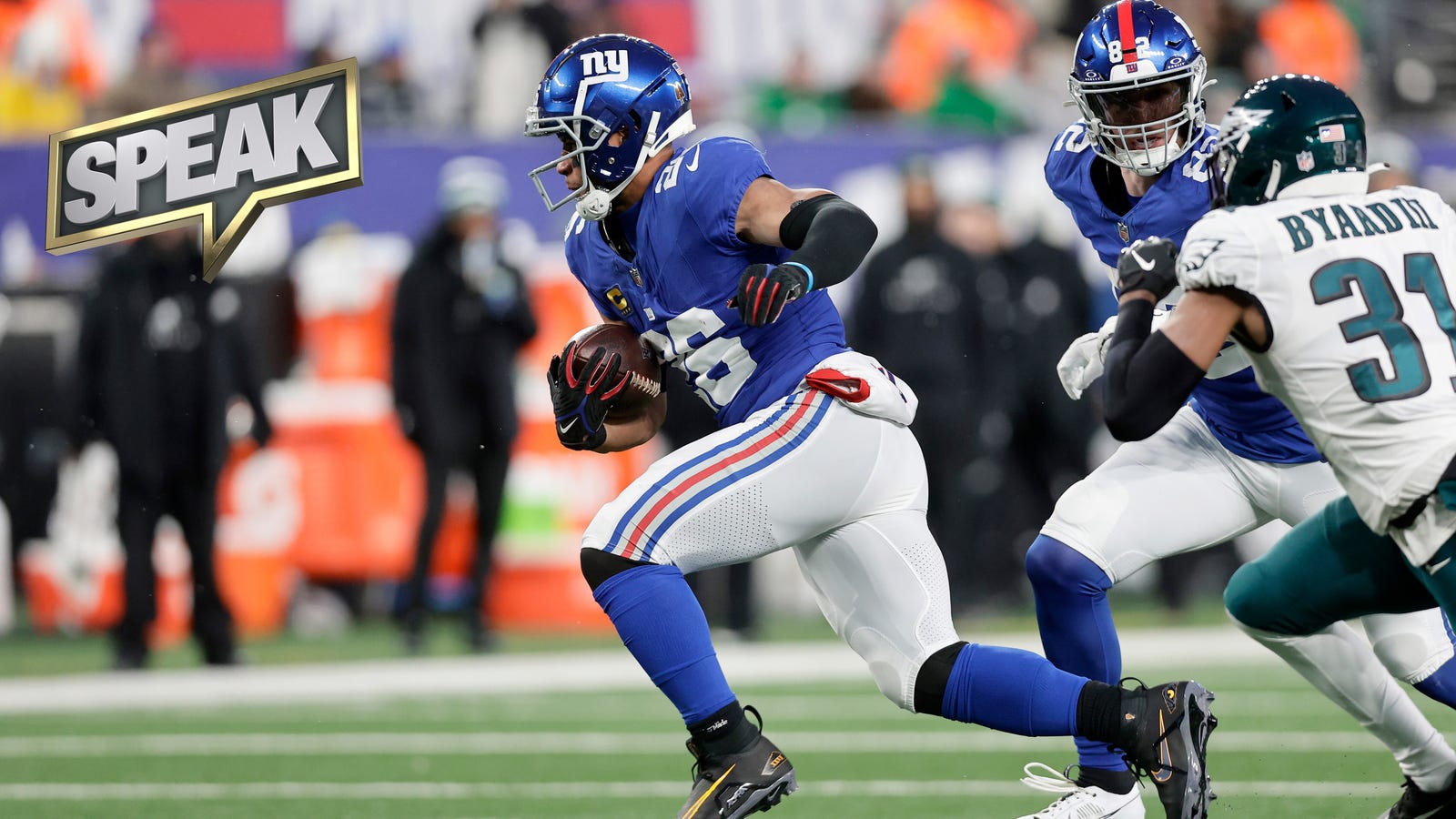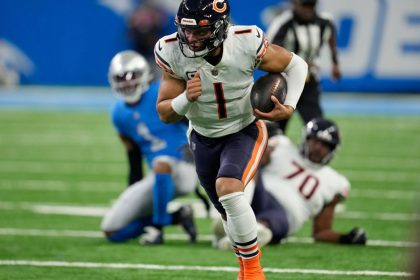It’s been six years since Dave Gettleman famously proclaimed that Saquon Barkley “was touched by the hand of God” before he grabbed what he believed was a future Hall of Famer with the second pick of the NFL Draft. The then-New York Giants general manager scoffed at the league’s devaluation of running backs, insisting the player he fell in love with was far more than just that.
Outside of his stellar rookie season, Barkley hasn’t proven his old boss right. Even at his best, he couldn’t come close to pulling the Giants out of their misery. And a series of injuries derailed his Hall of Fame aspirations and showed everyone why running backs were risky financial bets. His first six seasons have only emboldened the critics who insisted he was over-drafted, that running backs should be devalued.
But now that Barkley has moved 90 miles down the New Jersey Turnpike, what if the Philadelphia Eagles are about to prove that Gettleman was right about Barkley all along?
“It’s not that Barkley, or any running back, doesn’t have value,” an NFL general manager told FOX Sports. “He’s a great player. Everyone knew it then, and everyone would love a guy like that on their team now. But it has to be the right team. A running back needs a good offensive line. He needs coaches who use him the right way. He needs to be in a system that turns him into a real weapon.
ADVERTISEMENT
“The Giants never had that. But Barkley’s got that now.”
That’s why the Eagles made the seemingly out-of-character decision to sign the 27-year-old Barkley to a three-year, $37.75 million contract with $26 million guaranteed when free agency started last month. They were willing to look beyond his unimpressive overall production and his history of injuries — a torn ACL, multiple sprained ankles and shoulder/neck issues — because they saw the kind of upside Gettleman once saw, too.
And unlike the Giants, they believe they have the ability to draw that upside out. They’re literally banking on it.
“One of the things that we always talk about … is the value of a running back,” Eagles owner Jeffrey Lurie said at the NFL owners meetings last week. “It’s not even the word in the title — ‘running back.’ You have to be a great passing-attack running back. For us, it’s got to be multi-functional.
“And [Saquon] exhibited very special skill sets, both in the running and passing game, that we think certainly can be maximized by being on a team with better skill positions, quarterback, offensive line.”
There is no doubt the Eagles have all that. Even with the retirement of center Jason Kelce they should have one of the NFL’s best offensive lines, while the Giants, for most of Barkley’s career, have consistently had one of the worst. Jalen Hurts‘ ability and accomplishments far exceed those of Daniel Jones. And the Giants haven’t had receivers anywhere near the quality of A.J. Brown, DeVonta Smith and tight end Dallas Goedert since they traded Odell Beckham a few months after the end of Barkley’s rookie season.
Perhaps it wasn’t a coincidence that with Beckham drawing the attention of defenses in 2018 and catching 77 passes for 1,052 yards and six touchdowns in just 12 games, Barkley had his finest season. He ran for 1,307 yards and 11 touchdowns as a rookie and, with Giants head coach Pat Shurmur calling the plays, Barkley caught an astounding 91 passes for 724 yards and four touchdowns on his way to winning the NFL’s Offensive Rookie of the Year award.
Barkley hasn’t come close to matching those passing-game numbers since, even though there are many around the NFL who believe he still could.
“It all depends on what you do with him,” said an NFC scout. “He can still catch. He can still make people miss. He can still explode into an opening when it’s there. The key is getting him into space, so he can do the things that make him special. If they use him like the 49ers use (Christian) McCaffrey — which I think they will — he’ll be phenomenal. They’ve never had a running back like that.”
The stats back that potential up. Barkley averaged 3.9 yards per carry last season, but 2.9 of those came after contact, according to Pro Football Focus (16th among running backs with at least 150 carries). The Eagles as a team averaged just 2.6 yards per rush after contact. And their primary running back, D’Andre Swift, averaged only 2.4.
But Swift averaged 4.5 yards per carry overall, meaning he generally went 2.1 yards before he got hit — unlike Barkley who, on average, got hit after just one yard. The difference sounds small, but it adds up to the potential for another 250 yards on the season for Barkley — more if he’s able to take advantage of the momentum of an extra head start.
That’s what the Eagles are envisioning — the picture of Barkley not getting hit so often in the backfield, as he did constantly behind the Giants’ leaky line. They imagine defenses being off balance as they try to guess whether Hurts is handing the ball to Barkley or running it himself — like how the Giants thrived in 2022, their lone playoff season with Barkley, when he ran for 1,312 yards (on 4.4 yards per carry) in part because Jones ran for 708 yards, too.
And imagine that happening while defenses are already worried about Brown (106 catches, 1,456 yards, seven touchdowns last season), Smith (81-1,066-7) and Goedert (59-592-3 in 14 games), completely unable to stack the line of scrimmage to stop Barkley the way defenses routinely did against the Giants the last six years.
The Eagles obviously have. They have likened the addition of Barkley to their 2022 trade for receiver A.J. Brown, which had a transformational effect on what was a one-dimensional offense. Before Brown arrived. Hurts rarely threw to the middle of the field, a young Smith struggled to carry the passing game on his shoulders. Then their entire offensive identity changed. They went from the NFL’s 14th-ranked offense in 2021 to third after Brown arrived and ended up in Super Bowl LVII.
“A couple years ago when we added A.J., there was a lot of work as to, ‘Hey, what does A.J. do well?'” Sirianni said. “Obviously, you do that going in, but look at it even more after you get him. What does A.J. do well? How can we use him? And it’s been a similar process here with Saquon.”
So how will they use Barkley? While it’s impossible to know what new offensive coordinator Kellen Moore has planned, the Eagles seem most excited about how they can use Barkley as a receiver. And while it’s unlikely Barkley will equal his receiving production from his rookie season, it’s a good bet he’ll obliterate the 39 catches for 214 yards the Eagles got from Swift last season. He might even approach the receiving totals they got from all their running backs combined (74-454-1).
“Guys like that, however you use them, they’re going to do a good job,” Sirianni said. “To say, ‘Hey, he’s going to get 50 catches, 60 catches, 70 catches’ … We’re way too early for that. This offense looks different than Kellen’s offenses in Dallas. This offense looks different as far as offenses in Indy or early on here in Philadelphia.
“You also have to remember you’ve got to share it with some other guys that are really good players, too. You never know how that’s going to look, how that’s going to play itself out.”
With the Giants last season, Barkley accounted for 30.3 percent of the Giants’ offensive yards in the 14 games he played last season and either touched the ball or was targeted on 35.3 percent of their plays. It’s hard to imagine he’ll equal that share given that Brown, Smith and Goedert will get plenty of touches, and Hurts will do his share of running, too.
But it’s not impossible to imagine.
“I mean, the guy touches the ball 300 times a year, hopefully,” Roseman said. “There’s not a lot of other skill position players that are touching the ball that many times and having that effect.”
That’s why the way the 49ers used McCaffrey is “the blueprint” for how to use Barkley, as another NFC scout suggested. Even on a team with passing-game weapons like Brandon Aiyuk (75-1,342-7), Deebo Samuel (60-892-7) and tight end George Kittle (65-1,020-6), McCaffrey was “the centerpiece of everything they did — the focus of every defense.” In the second year of the four-year, $64 million contract extension he signed when he was still in Carolina in 2020, McCaffrey had 2,023 total yards — 31.2 percent of the 49ers’ total — and was targeted or touched the ball on 36.7 percent of their plays.
McCaffrey was so dangerous and so productive that he was in the MVP conversation deep into the season. And the 49ers, of course, ended up in Super Bowl LVIII.
“The Eagles have a better quarterback and better receivers, so maybe they can’t do it that drastically,” the scout said. “But they’ve got the ability now to not lean on their receivers so much. That was the biggest difference late last season (when the Eagles finished 1-6). They weren’t running as much or as effectively and teams started to take away their passing lanes and their offensive became one-dimensional again.
“That won’t happen if defenses are worried about Barkley. Maybe Brown and Smith’s numbers will go down a bit, but they’re all going to be so much more dangerous together.”
Barkley might be the most dangerous component of all of them. At least that’s what the Eagles are hoping. Maybe none of them are ready to make Holy comparisons with their new running back, or fit him for a gold Hall of Fame jacket yet, but they clearly see the potential for greatness that has mostly eluded him so far.
And what if he finally achieves it and becomes the unstoppable weapon he was once thought to be? It certainly could help change the NFL’s views on the declining value of running backs. Of course, it could also be fodder to critics who view running backs as the final piece of a championship puzzle, not a building block for future success.
Even the Eagles haven’t staked out a clear position on that. They’ve balked at the perception that they haven’t placed a high value on running backs in the past, pointing out that they once gave lucrative deals to running backs Brian Westbrook and LeSean McCoy — though both were more than a decade ago. They also had talks with the Carolina Panthers about a trade for McCaffrey (and his hefty contract) before he was dealt to the 49ers in 2022, according to a team source. There was even some speculation that they were interested in acquiring a running back at the trade deadline last year.
But for them, it’s not about running backs. It’s about this particular running back, who they felt the market had badly misjudged.
“We’re always looking for inefficiencies in the market,” Lurie said. “And if we think the league is overvaluing a position or undervaluing a position, we will try our best of taking advantage of those inefficiencies.”
In other words, they saw that the Giants had something special in their midst, but weren’t capable of maximizing his value.
They are sure that they’re the ones who finally can.
Ralph Vacchiano is the NFC East reporter for FOX Sports, covering the Washington Commanders, Philadelphia Eagles and New York Giants. He spent the previous six years covering the Giants and Jets for SNY TV in New York, and before that, 16 years covering the Giants and the NFL for the New York Daily News. Follow him Twitter at @RalphVacchiano.
recommended
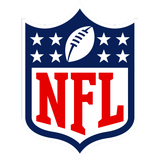
Get more from National Football League Follow your favorites to get information about games, news and more

